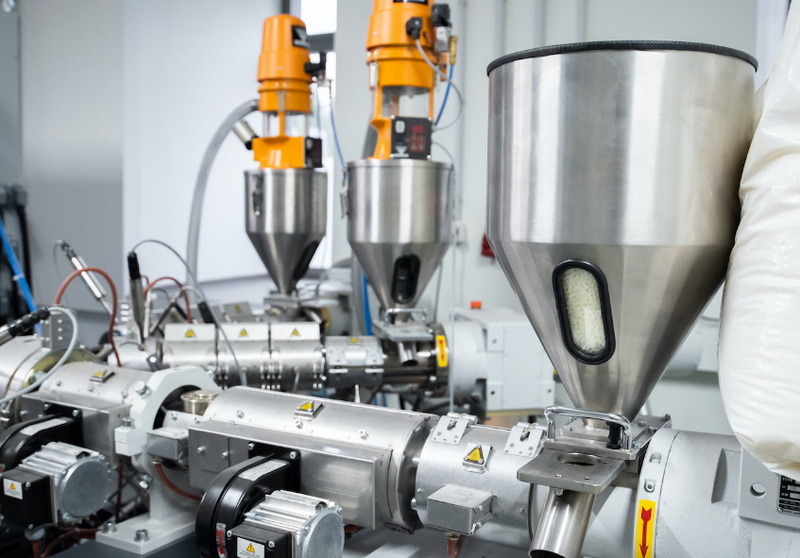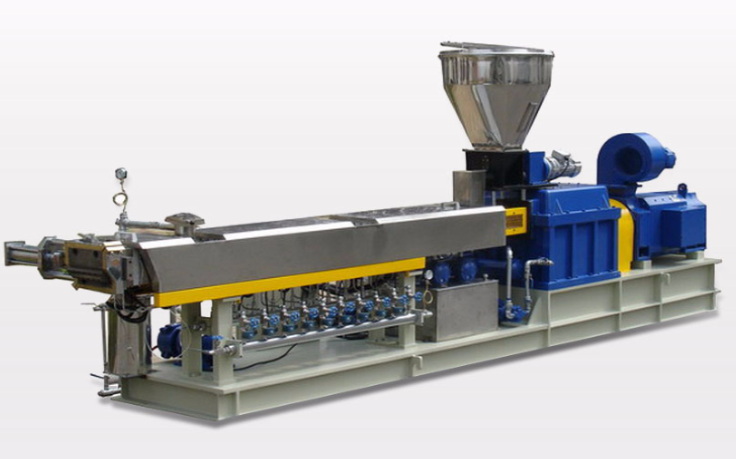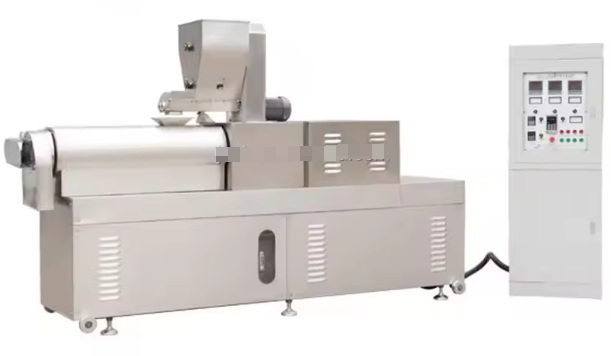Content Menu
● Overview of Omipa Extrusion Machinery
>> Material Handling and Thickness Range
>> Useful Width and Output Capacity
>> Configuration and Applications
● Key Features of Omipa Extrusion Machinery
>> 1. Innovative Screw Design
>> 2. Flexible Calender Systems
>> 3. Advanced Temperature Control
>> 4. Rapid Roll Change System
>> 5. Digital Control System
● Applications of Omipa Extrusion Machinery
● Technological Advancements
>> Sustainability and Environmental Considerations
● Global Market Trends and Demand
>> Impact on Emerging Markets
● Case Study: LADA-LIST Company
● Conclusion
● Frequently Asked Questions
>> 1. What Materials Can Omipa Extrusion Machinery Process?
>> 2. What Is the Thickness Range of Omipa Extrusion Lines?
>> 3. What Are the Key Applications of Omipa Extrusion Machinery?
>> 4. How Does Omipa's Digital Control System Enhance Production Efficiency?
>> 5. What Technological Advancements Does Omipa Focus On?
● Citations:
Omipa extrusion machinery is renowned for its versatility and efficiency in producing a wide range of plastic products, from general-purpose sheets and foils to specialized hollow profiles. With over five decades of experience, Omipa has established itself as a leader in the extrusion industry, offering innovative solutions tailored to meet diverse customer needs. This article will delve into the key features of Omipa extrusion machinery, highlighting its capabilities, applications, and technological advancements.

Overview of Omipa Extrusion Machinery
Omipa's extrusion lines are designed to handle various thermoplastic materials, including ABS, HIPS, GPPS, PET, ABS/PMMA, ABS/PC, SAN, PP, and HDPE. These materials are used in a broad spectrum of industries, such as food packaging, household appliances, automotive, and construction.
Material Handling and Thickness Range
Omipa extrusion lines can process materials with thicknesses ranging from 0.15 mm to 40 mm or more, depending on the specific application and material type. This flexibility allows for the production of both thin films and thicker sheets, catering to different market demands.
Useful Width and Output Capacity
The useful width of Omipa's extrusion lines spans from 600 mm to 2500 mm or more, accommodating large-scale production needs. The output capacity can reach up to 2000 kg/h, ensuring high productivity levels.
Configuration and Applications
Omipa extrusion lines are available in monolayer and coextruded configurations, with the capability to produce up to five layers or more. This versatility enables the creation of complex structures for various applications, including food packaging, electrical appliances, automotive components, and building materials.
Key Features of Omipa Extrusion Machinery
1. Innovative Screw Design
Omipa's extruders feature an innovative helical screw profile designed to optimize the processing of different thermoplastic materials. This design ensures efficient material mixing and uniformity, resulting in high-quality products.
2. Flexible Calender Systems
The calender systems in Omipa's extrusion lines are highly flexible, offering configurations such as vertical, 45°, or horizontal setups with variable roll positions. The rolls can be equipped with different diameters and up to five rolls, allowing for precise control over sheet thickness and quality.
3. Advanced Temperature Control
Each roll in the calender system has independent temperature control, with a newly designed thermoregulation unit that can use water or oil as the thermoregulation fluid. This allows for precise temperature management, which is crucial for maintaining optimal production conditions.
4. Rapid Roll Change System
Omipa has developed a system for rapid roll changes, which is particularly beneficial for producing embossed sheets. This feature minimizes downtime and enhances production efficiency.
5. Digital Control System
Omipa's extrusion lines are equipped with a sophisticated digital control system that integrates all line functions into a single workstation. This system allows for real-time monitoring and adjustment of production parameters, ensuring high efficiency and reliability.

Applications of Omipa Extrusion Machinery
Omipa's extrusion machinery is used across various industries due to its versatility and adaptability. Some of the key applications include:
- Food Packaging: Omipa's machinery is used to produce sheets for food packaging, ensuring safety and durability.
- Household Appliances: The extruded materials are used in components for household appliances, such as refrigerator shelves and drawers.
- Automotive Industry: Omipa's products are utilized in the automotive sector for parts like dashboard components and interior trim.
- Construction: Sheets produced by Omipa's machinery are used in building materials, such as roofing and insulation.
Technological Advancements
Omipa continuously invests in technological advancements to enhance its machinery's performance and efficiency. Some notable advancements include:
- Innovative Screw Profiles: Designed to optimize material processing and reduce energy consumption.
- Advanced Calender Systems: Allow for precise control over sheet thickness and quality.
- Digital Integration: Enables seamless integration with corporate data management systems for streamlined production control.
Sustainability and Environmental Considerations
Omipa also focuses on sustainability by incorporating post-industrial recycled materials (PIR) into its production processes. This not only reduces waste but also ensures that the final products maintain high quality while optimizing energy consumption. The ability to process up to 100% recycled materials aligns with global efforts to reduce plastic waste and promote a circular economy.
Global Market Trends and Demand
The global extrusion machinery market is experiencing significant growth due to increasing demand for extruded materials in emerging markets. This demand is driven by rapid industrialization and urbanization, particularly in regions like Asia-Pacific, Latin America, and Africa. The construction and automotive sectors are major contributors to this growth, as they require durable and lightweight materials for infrastructure projects and vehicle components.
Impact on Emerging Markets
In emerging markets, Omipa's extrusion machinery plays a crucial role in meeting the rising demand for extruded materials. The machinery's versatility and efficiency enable local manufacturers to produce high-quality products that meet international standards, thereby supporting economic development and industrial growth.
Case Study: LADA-LIST Company
The LADA-LIST company's acquisition of an Omipa extrusion line for producing ABS/PMMA sheets is a notable example of how Omipa's technology is expanding into new markets. This line, launched in December 2020, has a capacity of 1200 kg/h and can produce sheets with various properties, including deep color, high chemical resistance, and scratch resistance. The introduction of this line has brought a new product to the Russian and CIS markets, demonstrating Omipa's ability to adapt to diverse customer needs.
Conclusion
Omipa extrusion machinery stands out for its versatility, efficiency, and innovative design. With a wide range of applications across different industries, Omipa's products are tailored to meet specific customer needs while ensuring high-quality output. The company's commitment to technological advancements and customer satisfaction has solidified its position as a leader in the extrusion industry.

Frequently Asked Questions
1. What Materials Can Omipa Extrusion Machinery Process?
Omipa extrusion machinery can process a variety of thermoplastic materials, including ABS, HIPS, GPPS, PET, ABS/PMMA, ABS/PC, SAN, PP, and HDPE.
2. What Is the Thickness Range of Omipa Extrusion Lines?
Omipa extrusion lines can produce materials with thicknesses ranging from 0.15 mm to 40 mm or more.
3. What Are the Key Applications of Omipa Extrusion Machinery?
Omipa's machinery is used in food packaging, household appliances, automotive, construction, and other industries due to its versatility and adaptability.
4. How Does Omipa's Digital Control System Enhance Production Efficiency?
Omipa's digital control system integrates all line functions into a single workstation, allowing for real-time monitoring and adjustment of production parameters. This enhances efficiency, reliability, and profitability.
5. What Technological Advancements Does Omipa Focus On?
Omipa focuses on innovative screw profiles, advanced calender systems, and digital integration to enhance its machinery's performance and efficiency.
Citations:
[1] http://www.omipa-extrusion.com/extrusion-lines/general-purpose-sheet-foil/
[2] https://www.zuroplast.com/news/zapusk-novoi-linii-omipa.html
[3] https://it.linkedin.com/company/omipa-plastic-extrusion-machinery
[4] https://www.databridgemarketresearch.com/reports/global-extrusion-machinery-market
[5] https://www.plastonline.org/sites/default/files/u3/rassegna%20ing_bassa.pdf
[6] https://www.linkedin.com/posts/omipa-plastic-extrusion-machinery_extrusiontechnology-innovation-researchanddevelopment-activity-7221487523489804288-gsYb
[7] https://kayanalpha.com/2023/10/machinery-division/
[8] http://plasticsandrubberasia.com/oct2013/leadfeature4.html
[9] https://www.linkedin.com/posts/omipa-plastic-extrusion-machinery_omipa-activity-7263130110705205248-9ZKg
[10] https://machinesitalia.org/company/omipa-spa
[11] https://www.linkedin.com/posts/omipa-plastic-extrusion-machinery_omipas-all-inclusive-training-program-activity-7265665368205971456-5vY_
[12] https://www.linkedin.com/posts/omipa-plastic-extrusion-machinery_sustainability-is-in-the-details-activity-7273286789656702979-lJI7
[13] https://www.linkedin.com/posts/omipa-plastic-extrusion-machinery_activity-7270731225911189504-GNeW
[14] https://www.euro-machinery.com/product-category/plastic-recycling-machines/recycling-lines/
[15] http://www.download.polympart.ir/polympart/EMag/FSE-Oct-2019.pdf
[16] https://www.macplas.it/sites/default/files/2022-11/Machines%20Italia%20at%20PLAST%202012.pd






















